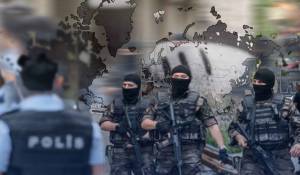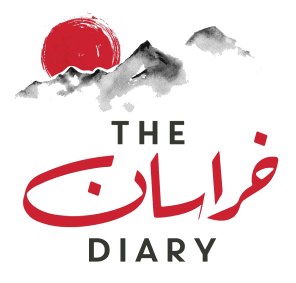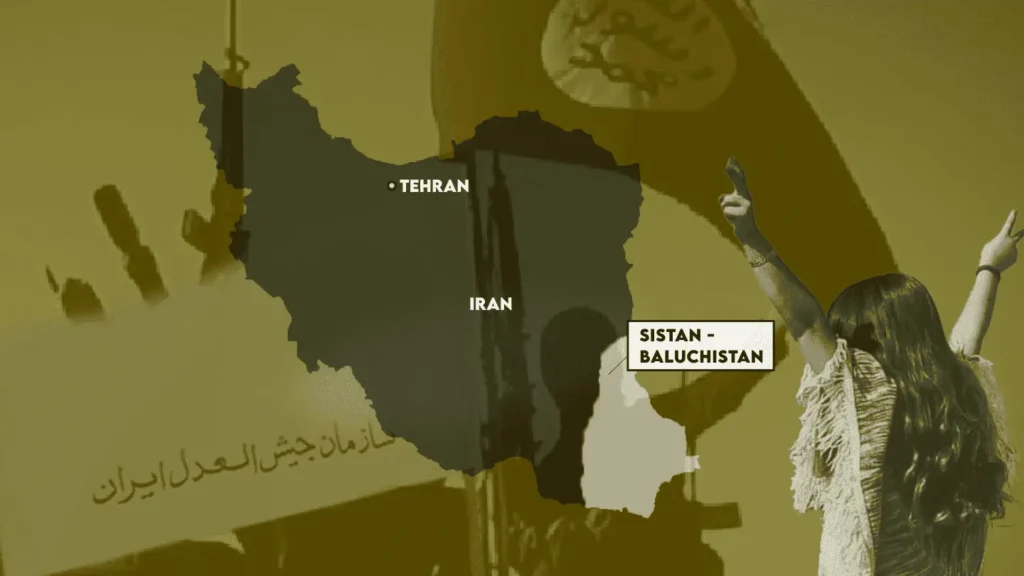
Roberto N.

December 08, 2025
By | Roberto N.

The province of Sistan-Baluchistan, a Sunni-majority region within Iran, stands as a notably sensitive area. Among Iran’s 31 provinces, it holds the distinction of being the second largest in size, trailing only Kerman. Its character is deeply rural, with over 50% of its populace residing in villages, a contrast to the national average of 25%. With a population of 2.8 million, the province grapples with significant challenges, including rampant unemployment (ranging between 40% and 60%) and pervasive poverty (touching 70% of the population, who live below the poverty line).
An early entrant into the province’s landscape was the Deobandi-Salafi group Jundullah, also known as the “Soldiers of God,” founded in 2003 by Abdulmalek Rigi. Its ranks initially comprised 2,000 members.
In 2022, Iran experienced widespread protests following the mysterious death of a 22-year-old woman named Mahsa Amini in custody on September 16. This incident raised troubling questions about state and police brutality, provoking countrywide demonstrations. As the security apparatus clamped down on these protests, a notable spillover effect was felt in Sistan-Baluchistan, creating an environment conducive for heightened anti-Tehran propaganda by Jihadi factions.
On October 20, Jaish-Ul-Adl, a Jihadi group that took over from Jundullah in 2012 after its leader Rigi was enigmatically apprehended and subsequently executed by Iranian authorities, released a video expressing solidarity with the protests. The video carried a brazen threat, warning of impending attacks against Iranian security forces across all provinces.
This video also marked an extraordinary departure from the group’s hitherto low-profile stance. It showcased a sizeable contingent of fighters—between 200 and 300—along with numerous vehicles, moving across the desert. This display amounted to a direct “challenge” to Iranian authorities. At this juncture, the region was witnessing a surge in anti-Shia propaganda disseminated through social and official media by Islamic State’s regional branch, the Islamic State Khorasan (ISKP). This propaganda was drawing an increasing number of followers, even from individuals affiliated with traditional Jihadi groups less inclined towards sectarian agendas.
Notably, this video’s release occurred nearly a month after the events in Zahedan, the capital of the Iranian province. On September 30, 2022, the city had experienced a violent eruption of unrest following the alleged rape of a teenage girl by an Iranian police officer. This tragic incident, referred to as “Black Friday,” resulted in the loss of more than 50 lives.
The significance of Jaish-Ul-Adl’s message on October 20 extended beyond mere media maneuvers. This became unmistakably clear six days later, on October 26, when a mass shooting claimed the lives of 15 individuals in Shah Cheragh, a mosque located in Shiraz, Fars Province.
While the Islamic State (IS) asserted responsibility for the assault through its propaganda arm, Amaq, many experts, considering the extent of the propaganda, did not dismiss the possibility of some degree of coordination, possibly at the logistical level, with the ISKP.
This suspicion gained validation through an Iranian Ministry of Intelligence report released on November 7. The report identified the attacker, Tajik Sobhan Komrouni (who later died in a hospital), as a collaborator with an Afghan named Mohammad Ramez Rashidi. Additionally, the report implicated an Azeri citizen as the principal mastermind of the operation, operating from Tehran.
Iran exploited the involvement of an Azeri in the attack as a narrative tool, furthering its longstanding propaganda narrative that Israel supports Jihadi groups opposed to Iran, particularly the ISKP. Tehran consistently alleges that Israel maintains covert bases in Azerbaijan to foment destabilization against the Islamic Republic.
On May 16, 2023, the Intelligence Organization of the Islamic Revolutionary Guard Corps (IRGC) claimed the arrest of ISKP’s communications leader in Fars Province, along with the main orchestrator of the Shahcheragh attack. The operation was a joint effort between the IRGC and Fajr Intelligence Corps in the province. Allegedly under surveillance since 2018, the arrested individual held responsibility for both media and operations in the region, as well as overseeing recruitment. Other group members were also detained.
This marked the first explicit connection declared by Iranian authorities between ISKP and the central IS organization, which had claimed responsibility for the attack as previously noted.
The arrest followed closely after the IRGC inaugurated a new airbase in Zahedan (as reported on May 10 by IRGC-linked media). The Shahid Ali Arabi airbase is intended to house the IRGC’s helicopter and drone fleet. Major General Salami, the IRGC Commander-in-Chief, attended the opening ceremony.
Beyond the Shiraz attack, the province witnessed an upsurge in assaults on Iranian security forces and IRGC personnel after September 2022. This resulted in an escalation of Intelligence-based operations (IBOs) in Sistan Baluchistan and Ahvaz, leading to the arrest of individuals accused by Tehran of links to Israel.
During the spring and summer of 2022, a new religio-nationalist militant outfit emerged in the province, known as Mazaran-e-Gomnaam Baluchistan, conducting attacks against IRGC forces. While the group’s origins remain unclear, local sources suggest potential connections to splinter factions from other Jihadi groups in the region.
The province’s situation worsened following the demise of Sunni religious figure Abdul Vahid Rigi in December 2022. Ahmad Vahidi, the Iranian Minister of Interior, publicly asserted that the killing had been orchestrated outside Iran, aligning with the Khamenei narrative of “enemy-funded mercenaries.” The Minister of Intelligence, Esmail Khatib, echoed similar words, implicating an unspecified Persian Gulf country.
Simultaneously, Khamenei grappled with challenges stemming from an unprecedented attack on his political and religious leadership by Molavi Abdolhamid Ismaeelzahi, the Friday prayers leader of Zahedan.
Given the province’s delicate ethnic and sectarian composition and the prevailing circumstances, including international criticism of Tehran’s response to protests, Khamenei seemingly adopted a “containment” approach toward the religious figure. This maneuver aimed to prevent his arrest, which could potentially turn him into a martyr and elevate his popularity further. Ismaeelzahi holds significant popularity within the local Sunni community.
Born in 1947 in Galugah, a village in the province, Ismaeelzahi attended school in Zahedan before relocating to Pakistan. He later returned to teach at Darul Uloom Seminary, Iran’s largest Sunni seminary. The seminary was founded by his father-in-law, Molana Sheikh Abdul Aziz Mollazadeh, who, after the 1979 revolution, became one of the two Sunni members of the Constitutional Assembly. Following Molana Mollazadeh’s passing in 1987, Ismaeelzahi assumed leadership. In 1994, he faced the repercussions of the attack and destruction of Sheikh Mohammad Feiz Mosque in Mashhad, which had ripple effects in Zahedan. On February 1, 1994, security forces opened fire on protesters holding a sit-in at Makki Friday Mosque.
Molavi Abdolhamid’s son-in-law, Mohammad Esmail, encountered legal issues with the Iranian judiciary. On September 1, 2011, he received a 10-year prison sentence on charges of “spying and actions against national security,” accused of providing information to foreign intelligence agents.
Notably, during the 2013 and 2017 presidential elections, Ismaeelzahi lent support to Hassan Rouhani, who garnered significant support in the predominantly Sunni regions of Kurdistan Sistan and Baluchistan.
Regarding developments involving Iran’s eastern neighbor, Ismaeelzahi expressed support for the Taliban, noting that today’s Taliban differ from their predecessors of two decades ago. However, he criticized the group for preventing girls from attending school.
The crisis in Sistan Baluchistan prompted Iranian authorities to appoint IRGC General Mohammad Karami as the province’s Governor, indicating a security-focused approach to its challenges.
Recent internal discussions regarding potentially elevating the status of the Judiciary’s “protection and intelligence” department to an “intelligence Organization” parallel a previous process that took place 13 years ago. Back then, the Revolutionary Guard’s Intelligence Department, “Ettelaat-e-Sepah,” was elevated to “Organization” status in response to the 2009 protests. This trend aims to bolster the judiciary’s security apparatus and its role in provinces, particularly sensitive regions like Sistan Baluchistan and Ahvaz.
Following the dismantling of Jundullah in 2010, the group bifurcated into two entities: Harakat Ansar-e-Iran and the aforementioned Jaish Ul Adl. In 2013, Harakat Ansar-e-Iran merged with a new group, Hizb Al Furqan, forming Ansar Al Furqan. The influence of ISKP’s recruitment efforts led to the emergence of another group, Harakat-e-Khilafat-e-Baluch, in 2015. The State Department designated both Jundullah and Jaish Ul Adl as terrorist organizations in 2010 and 2019, respectively.
Another group that frequently surfaces in discussions is “Harakat Islami Sistan.” This group reportedly operates within Iran and purportedly maintains connections with IS.
The rapid surge in attacks within the province, coinciding with escalating protests in Iran triggered by the enigmatic death of Masha Amini in custody, illuminated the involvement of Salafi groups operating in tandem with ISKP/ISPP. Additionally, questions arose about the eventual alignment or cooperation of these groups with IS central, which has, in recent years, managed to infiltrate Iranian territory via the Iraqi route. An instance of this was the military attack on the Ahvaz military parade on September 22, 2018, leading to 25 casualties, an attack later claimed by IS.
During the past year, the propagation of anti-Shia (and more specifically, “anti-Iranian”) sentiments has notably intensified. ISKP has frequently announced new offensives against Iranian interests in the region in various public statements. In response, Iran has heightened its intelligence efforts in Sistan, culminating in operations that validate the presence of ISKP affiliates in the province.
On January 20, 2023, Iranian intelligence sources disclosed the disbandment of two ISIS-inspired groups, predominantly composed of Afghans and Tajiks, operating in Iranshahr, Sistan Baluchistan. These groups reportedly aimed to abduct foreigners in Chabahar. The participation of Afghans and Tajiks suggested a role within the ISKP network, possibly with funding originating from IS central.
On January 26, ISKP’s official media arm, Al Azaim, specifically the Tajiki branch, released a statement reporting the arrest of a Tajik member named Abu Musab in Zahedan by Iranian intelligence. In this communication, ISKP cautioned its militants against trusting Abu Musab’s online account, as it might be a mean for the IRGC to identify and entrap other ISKP members or supporters. Abu Musab was allegedly part of one of the two cells identified by Iranian authorities in the province, both of which reportedly had Tajik members. On the same day, Iran’s Minister of Intelligence, Esmail Khatib, announced the apprehension of around a dozen terrorist groups, while again accusing them of having links to Israel.
The Iranian Ministry of Intelligence collaborates with the IRGC’s “Intelligence Organisation” in the province. This collaboration is evident from a joint document released on October 28, 2022, which details CIA and Mossad activities aimed at destabilizing the nation.
ISKP/ISPP’s Salafi-inspired propaganda centers on “liberating” Iran’s two most vulnerable areas, Sistan Baluchistan and Ahwaz. The ISKP Farsi department’s publications frequently reference the concept of “liberating Ahwaz.” ISKP Farsi emerged as one of the most active divisions at the close of 2022 and, along with Jaish ul-Adl, openly supported the women led protest across Iran.
The presence of ISKP militants near the Iranian border has been acknowledged through Taliban operations in Herat, such as the one denounced by ISKP on March 6, 2023, which reportedly resulted in the deaths of six militants, including women and children.
Furthermore, in May 2023, a new group called the “freedom-loving youth of Baluchistan” celebrated the killing of five or six Iranian border guards in Saravan, an incident that occurred two days prior.
Subsequent weeks witnessed an escalation of attacks within the province.
On July 8, militants from Jaish al-Adl attacked a police station in Zahedan, using explosives to breach the gates. A subsequent gunfight led to the deaths of two Iranian officers and four assailants. On the same day, Iran executed two individuals for their involvement in a shrine attack in Shiraz. These individuals, Mohammad Ramez Rashidi and Naeem Hashem Qatali, were hanged following the Supreme Court’s confirmation of their sentences. They were alleged to have had contact with ISIL operatives in Afghanistan. Three other individuals were sentenced to prison for their roles in the attack. Later, on July 23, an Iranian police patrol was ambushed, resulting in the killing of four officers.
Interestingly, it remains uncertain whether a second attack on August 13, 2023, at the previously targeted Shah-e-Cheragh shrine in Shiraz was in retaliation for the mentioned executions. Official Iranian media reported four deaths in this attack.
Concurrently, rumors circulated in Afghanistan that the Taliban’s intelligence unit had seized US weapons in Nimrooz en route to Iran. Among the retrieved weapons were M4 and M6 rifles, night vision goggles, thermal equipment, and machine guns. In subsequent days, a pro-IRGC media channel identified the terrorist as “Rahmatullah Nowroz,” a Tajikistan citizen who resided in Rostov, Russia, in 2019.
The province’s underlying tension, particularly as the anniversary of the protests following Masha Amini’s death approaches, is underscored by the arrest of renowned Iranian Sunni cleric Mawlawi Fathi Mohammad Naghshbandi on August 20, 2023, in Rask. He was detained for allegedly inciting people to take to the streets for riots.
Though predicting the crisis’s potential evolution is challenging at this stage, the combination of escalating internal tensions due to the impending anniversary and intensified Sunni militant propaganda against Iran raises serious concerns in Tehran.